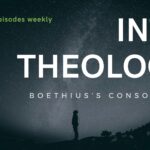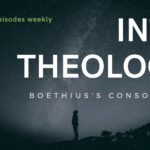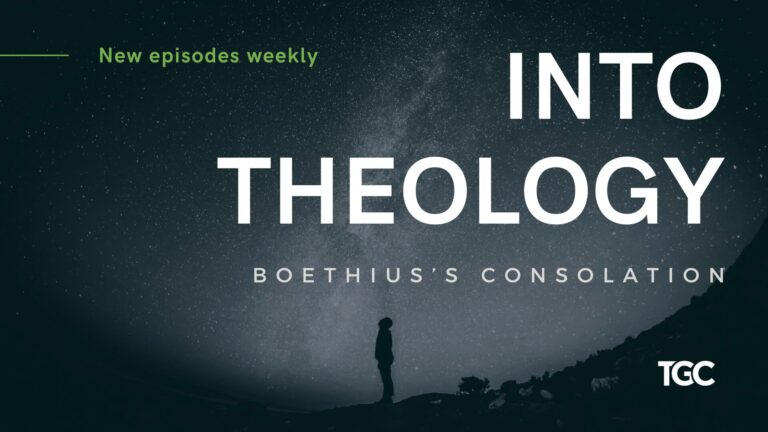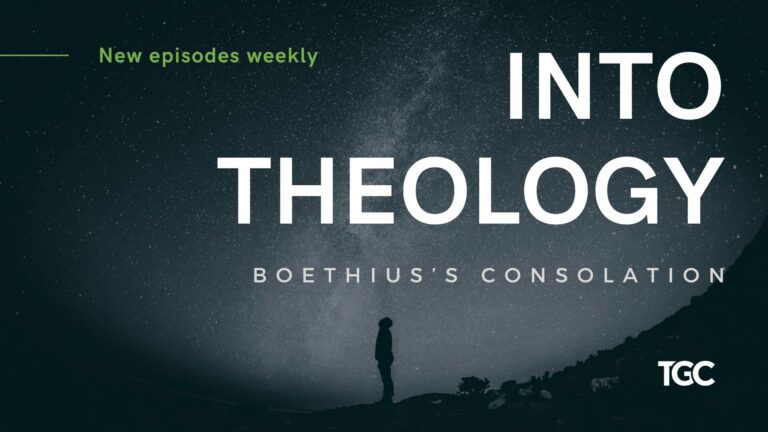In Matthew 24:36, Jesus says, “But concerning that day and hour no one knows, not even the angels of heaven, nor the Son, but the Father only.”
Given what Jesus says, we might ask: Why doesn’t the Son know what the Father does? Does this mean that the Son is not divine?
The Son is Divine and Human
To answer the second question first, Matthew 24:36 does not deny Christ’s deity. The Bible teaches that the Son is divine (John 1:1; Col 2:9) and human (John 1:14; Heb 2:14; Phil 2:7; Rom 8:3). Matthew 24:36 cannot contradict either of these biblical truths.
As a rule, Scripture sometimes speaks of Christ as equal to God in his divinity and at other times as less than the Father in his humanity. For example, Jesus affirms his equality to the Father when he says: “I and the Father are one” (John 10:30). And Jesus admits that in his humanity, “The Father is greater than I” (John 14:28).
This basic rule of interpretation is as old as the Bible. To see an article fully explain this biblical principle, click here.
For now, we need to keep these two truths in mind: “the Father is greater than is the form of the servant, whereas the Son is his equal in the form of God.”[1] These words of Augustine follow Paul’s argument in Philippians 2:6–8 where Paul affirms that the Son is equal to God in the form of God but less than God in the form of a servant, according to his humanity.
So yes, the Son is divine. And he also is human. Knowing this basic truth will make it easier to understand Matthew 24:36.
Based on this basic rule of interpretation, we can say the following. Because Jesus is human, Christ our Redeemer lives as a human does which includes his human ignorance in Matthew 24:36. Before explaining how this works, we need to pay attention to the larger biblical context around Matthew 24:36.
Biblical Context Surrounding Matthew 24:36
In his book On the Trinity, Hilary of Poitiers (AD 310–367) described how Arian theologians cited Matthew 24:36 to prove that Jesus was not the true God. Since Jesus was ignorant of something that God knew, they argued, then he must not be one nature with the Father. Taken by itself, one might come to this conclusion. However, reading the Bible well means reading it in context.
When it comes to Matthew 24:36, Hilary notes how “the meaning of words is to be ascertained either from those that precede or from those that follow” (De Trinitate §9.2).
Hilary means that we need to read the passage itself, the whole Book of Matthew, and even the whole Bible to understand the context of Matthew 24:36! Following his own advice, Hilary spends two chapters looking at what the whole Bible says about Jesus in his On the Trinity (chs 9–10).
In the near context, Jesus had affirmed his divinity before his comments in Matthew 24:36 (Matt 22:41–46). In the parallel passage in Mark (Mark 13:32), Jesus not only affirmed his divinity prior to this statement (Mark 12:35–37), but Mark the Gospel writer portrays Jesus as coming to the temple in Mark 11:15–19 as the Lord God, as the introduction to Mark’s Gospel suggests (Mark 1:2).
When read as a whole, the Bible tells us that as God Jesus knows everything (John 21:17; Ps 44:21). The Son and the Father are the one God of Israel (Deut 6:4; John 10:30). As Paul says, “For in him the whole fullness of deity dwells bodily” (Col 2:9). And “from his fullness we have all received, grace upon grace” (John 1:16; Col 2:10).
And as noted, the Bible also teaches “the Word became flesh and dwelt among us” (John 1:14) and “he himself likewise partook of” flesh and blood (Heb 2:14). God the Son is both human and divine. We might say that he has two natures: a divine and human nature.
If Jesus is divine and human, he does not stop being who he is in Mark 8:29 or in Matthew 24:36. To read Matthew 24:36 within its canonical context, we need to keep our eyes on the truth of what and who Jesus is: human and divine.
Let me try to simplify matters by asking a couple of questions.
Q: Is the word “Son” in the text of Mathew 24:36?
A: Yes
Q: Is the Son both human and divine?
A: Yes
Then Christ’s divinity and humanity are in the text. And we should not pretend the full Christ is not the full Christ because a passage does not intend to explain Christ’s two natures. “Jesus Christ is the same yesterday and today and forever” (Heb 13:8).
In order to be biblical, we must affirm that Christ is exactly what and who the Bible says he is. He does not stop being the personal union of divinity and humanity because a specific passage does not intend to outline these truths.
We must be biblical. Christ is divine and human today, yesterday, and forever. John Calvin, for example, while commenting on Matthew 24:36, affirms: “in Christ the two natures were united into one person in such a manner that each retained its own properties.” [2]
That is exactly true about Christ wherever you see him in the New Testament.
All that said, as God the Son knows all things. How then does Jesus being divine and human explain his ignorance in Matthew 24:36?
How Does Jesus’s Humanity Explain His Ignorance in Matthew 24:36?
In the words of Gregory Nazianzus, “We are to understand the ignorance in the most reverent sense, by attributing it to his human nature, and not to the Godhead” (Or. 30). And the reason why Jesus had to live as a genuine human was because, as Gregory also said, “What is not assumed is not healed” (Epistle 101 to Cledonius).
Put another way, Jesus had to live as we do—body, soul, and mind—so that he might heal and save every part of us. Jesus lived as a genuine human being—full of temptation, grief, and suffering—so that he could he be our great high priest. As Hebrews 2 says, Jesus took “flesh and blood” to himself so that he could sympathize with humans as their high priest (Heb 2:17–18).
Jesus likewise had human grief and anxiety as Hebrews 5:7 makes clear: “In the days of his flesh, Jesus offered up prayers and supplications, with loud cries and tears, to him who was able to save him from death, and he was heard because of his reverence” (Heb 5:7).
A bit earlier, Hebrews 4:15 summarizes this teaching by saying: “For we do not have a high priest who is unable to sympathize with our weaknesses, but one who in every respect has been tempted as we are, yet without sin” (Heb 4:15). Christ knows what human weakness feels like, as he says, “I am deeply grieved to the point of death” (Matt 26:38).
Biblically then, we must affirm that “there is one God and one mediator between God and mankind, the man Christ Jesus” (1 Tim 1:5–6). The man Jesus Christ is truly human “yet without sin” (Heb 4:15) since he came in the “likeness of sinful flesh” (Rom 8:3).
As a human, Christ did not know the day and the hour. John Calvin explains, “There would be no impropriety, therefore, in saying that Christ, who knew all things, (John xxi. 17,) was ignorant of something in respect of his perception as a man; for otherwise he could not have been liable to grief and anxiety, and could not have been like us, (Heb. ii. 17.)” (Harmony, 154).
Grief and anxiety, argue Calvin, arise partly because we do not know the future. Christ needed to experience such trials and temptations to be human. In this sense, Jesus can sympathize with us as a great high priest as well as teach us how to overcome trials without sin.
As Peter says, “Christ also suffered for you, leaving you an example, that you should follow in his steps. He did not commit sin” (1 Pet 2:21–22).
Jesus Christ, Our Redeemer, Became Human for Us
In one long sentence, John Calvin explains Jesus’s human ignorance in Matthew 24:36 by saying:
“I understand that, so far as he had come down to us to be Mediator, until he had fully discharged his office, that information was not given to him which he received after his resurrection; for then he expressly declared that power over all things had been given to him, (Matth. xxviii. 18.)” (Harmony, 154).
As the Mediator, Christ came to save us as a true man. Before his glorification, Jesus knows as humans do. Yet after his resurrection, Calvin argues, Christ the Redeemer receives knowledge about the day and the hour.
Since Calvin read the whole Bible as his context, he can also say of this passage: “in Christ the two natures were united into one person in such a manner that each retained its own properties” (Harmony, 154).
While keeping his eye on Christ who is both God and man, Calvin must exegete Matthew 24:36 theologically or else fail to be fully biblical. For this reason, the reformer explains how the divine nature of Christ remained divine while Christ reveals something particular to his humanity, namely, his ignorance of the day and the hour.
Calvin comments, “the Divine nature was in a state of repose, and did not at all exert itself, whenever it was necessary that the human nature should act separately, according to what was peculiar to itself, in discharging the office of Mediator” (Harmony, 154).
What Calvin means is that sometimes we see the humanity of Christ more particularly in some of his actions and others his divine nature. The key is that Christ came to be our Mediator and Redeemer.
The ignorance of Jesus in his role as Redeemer shows his true humanity, shows how he lived for us and for our salvation. As Hilary says, “the Lord removed the weight of our anxiety by saying that no one knows that day” (Matthew, §26.4).
As Jesus himself told his disciples, “It is not for you to know times or periods that the Father has set by his own authority” (Acts 1:7). And in the time of his humiliation, Christ lived as a genuine human for our sake by likewise not knowing the day and the hour.
We Must Read the Bible Contextually
When Hilary accused the Arians of not reading the Bible in context, Hilary meant that the Arians read Matthew 24:36 in isolation from the whole Bible. They read this verse as if it the rest of the Bible’s teaching on Christ did not matter. Hilary says we must not do that because God inspired the whole Bible to teach us about Christ.
While Matthew 24 does not go at length to teach on the two natures of Christ, other parts of Scripture do. And we must read the whole Bible’s context to ensure we understand its parts. To read only the few verses around Matthew 24:36 would be to read Scripture apart from its context. That is how the Arians, claims Hilary, deceived uneducated people.
Christians know, however, that Scripture interprets Scripture. And the whole Bible teaches that Christ is both God and man. And in what Paul calls “the mystery of godliness,” the eternal God “was manifested in the flesh” (1 Tim 3:16). And precisely because God the Son was manifest in the flesh, “the man Christ Jesus” became the “one mediator between God and men” (1 Tim 2:4).
When Jesus did not know the day and the hour in Matthew 24:36, he showed the fullness of his true humanity so that he could become our great high priest—our mediator. “For there is one God, and there is one mediator between God and men, the man Christ Jesus” (1 Tim 2:4).
[1] See The Trinity, trans. Edmund Hill, ed. John E. Rotelle, 2nd ed. (New York: New City Press, 1991), 78.
[2] John Calvin, Commentary on a Harmony of the Evangelists: Matthew, Mark, and Luke, trans. William Pringle (Edinburgh: Calvin Translation Society, 1846), 154.












